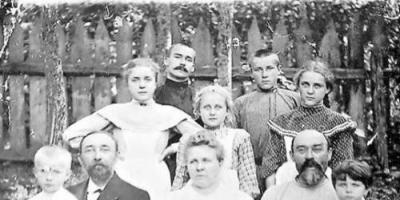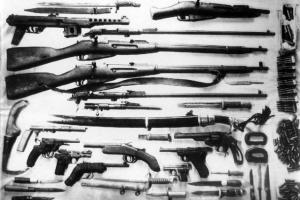As a rule, cutting up a cow carcass is done by professionals, but if you are faced with this task for the first time, detailed diagrams of the parts of a cow and a step-by-step description of its correct cutting will help you. In addition, certain meat parts are divided into grades based on quality, so when coming to the market, it is important for the buyer to know what is best to buy for a particular dish. This article will be useful for beginning farmers and anyone who wants to know the name of each part of a cow carcass and use them in dishes.
| Content |
Cow slaughter and initial dressing
Cow slaughter is carried out only by specialists who do it as painlessly and quickly as possible. For us, it is important to know whether all the subtleties are taken into account, for example, cattle are stopped feeding 24 hours before slaughter, so that bacteria from the stomach does not get into the meat. An empty stomach and tripe before slaughter are a guarantee that the quality of the meat will not suffer.
Once the animal is slaughtered and all the blood has been properly drained, it is imperative that the entrails be removed within the first 45 minutes. After cutting the sternum, the esophagus is quickly ligated and the gallbladder is carefully removed.
Internal organs are sorted, for example, the liver, heart and kidneys are suitable for consumption, they are called offal, and the stomach and intestines are thrown away. The skinned animal is sprinkled with salt, and the carcass is allowed to hang on a crossbar for some time before cutting. Cutting and deboning must be done at a temperature no higher than 10 degrees so that the product does not begin to deteriorate.

Cutting a cow carcass step by step
The carcass is cut up for both commercial and domestic use. Depending on the region, the beef cutting scheme may differ slightly, but the process is divided into several phases:
- Cutting the carcass into 2 parts across spine.
- Division of halves along the ridge on a quarter.
- Dividing into separate parts and separating the meat from the bone ( boning).
Boning is the final separation of an animal's meat from the bone; in the case of beef, the meat is completely separated, although there are some exceptions. The separated meat from the bone is cleaned of coarse films, tendons and cartilage - this process is called trimming and stripping. To give the meat an attractive, marketable appearance, even the thin edges of the pulp are removed.

Cutting the front of the carcass
- As already mentioned, the cow is divided in half behind the 13th vertebra and all the ribs remain in the anterior section. To avoid counting these vertebrae, it is enough to determine where the ribs end and chop.
- Then, each half of the cattle is cut into two more parts, but along the ridge - quartering.
- As for the front part, the neck, the thick edge of the dorsal region and the shoulder blade with the subscapular region are considered the most delicious and valuable. First, the scapular region is cut off, after which, taking from the last vertebra of the neck, the cervical part is cut out, leaving the dorso-thoracic region intact.
- The cervical and scapular parts are completely cut off from the bones, dividing them into the shoulder and upper arm.
- The dorso-thoracic region is cleared from the sternum, leaving some of the ribs and cartilage on it. Then use a sharp knife to remove the layer of meat. A thick edge is located near the ridge; the subscapular flesh is cut off from it. The remaining meat on the ribs is called trim.

Cutting the rear of the carcass
- The posterior part is divided into the lumbar region and the posterior pelvic or hip region. In the posterior pelvic region there is the most valuable and tasty piece - the tenderloin. In the lumbar region, the thin edge is more significant, followed by the hem and the flank less valuable.
- After the tenderloin is separated, you need to deal with the hind legs. It is necessary to remove the pelvic bone, trim the meat along the thigh bone and finally cut off the inner piece along the easily lagging layer. Then the femur and tibia bones are cut out with a knife, and the flesh is cut into films into parts with deft movements - the upper, outer, and also the side.
Description of beef carcass parts and their use in preparing various dishes
Beef is considered a dietary meat, compared to pork and lamb. In order for what you cook to be truly tasty and appetizing, you need to know exactly which piece is suitable for a particular dish. Which part to use for steak, and which part for jelly, from which part to cook a rich broth. Please review the recommendations below:

Neck, cut (grade 3)- includes tendons, but with prolonged cooking this part produces mouth-watering dishes - goulash, minced meat for cutlets, as well as aromatic jellied meat. 
Dorsal part (grade 1, 2)- consists of a delicate thin, thick edge and entrecote, and may even be offered in the store with bones. Both edges are distinguished by fine-fiber meat and may have 4-5 ribs. Entrecote is an excellent intercostal part, which is located along the vertebrae. This meat is used for baking, stewing, preparing rich soups, roasts, frying steaks, and roasting meat on ribs. 
Thick fillet, sirloin (1 grade)– fairly tender meat with the thinnest layers of fat. Used for quick frying, meatballs, beef stroganoff, cutlets, and for preparing minced meat. 
Tenderloin, sirloin (1 grade)– meat without streaks and fat, is considered the most significant. You can bake the whole tenderloin, make shish kebab, chops, azu, and steak. 
Rump (1st grade) – a very refined part, used for baking in the oven, stewing, boiling, in principle, for any dishes. 
Rump (mid thigh), probe (inner thigh), cut (lower thigh) (grade 1)– such meat is lean and valuable. Used for cooking soups, broths, stewing, baking. 
Peritoneum, flank (curl) (grade 2)– a rough section, has cartilage, films, fat, and also bones. These fractions are used to make minced meat for meatballs and cutlets, and to prepare broths for rich soup and borscht. 
Edge edge (grade 1)– meat with some areas of fat, tender. This segment is stewed, boiled, minced meat, goulash, etc. are prepared.
Spatula (2nd grade)- hard and coarse fibers and veins, without fatty layers, but this piece is also stewed, minced meat for cabbage rolls and cutlets. 
Brisket (1st grade)– due to the layers of fatty tissue, the meat is tender and valuable; they mainly cook roasts, stew, bake, and cook first courses. 
Hipster (3rd grade)– the meat is somewhat tough, but with prolonged cooking, you get delicious goulash and soups. 
Shank (3rd grade)– rich in veins and connective tissues, has medullary bone. Suitable for broths, jellied meats, and from pure pulp you can prepare minced meat or goulash. 
Knuckle (3rd grade)– has tendons, so it requires slow stewing, like for shanks. 
The science of cutting beef may at first glance seem complicated and unattainable, but thanks to culinary secrets and familiarization with the diagram of dividing it into parts, you can easily cope with this task!
Beef is a storehouse of nutrients. It is often used in menus for those who are switching to diet food. However, it is worth understanding that parts of a beef carcass may differ from each other according to many criteria, ranging from softness to taste.
Why do they love beef so much? How to choose a useful product
Beef is a healthy product; it contains a large amount of B vitamins. Before sale, the carcass can be kept in a suspended state, this only improves the taste of the product in the future. This state of the carcass can last about ten days.
When choosing a part of the carcass, you should pay attention to the freshness of the meat. Proper beef does not have brown or yellow fat, and it also has shades of brown - spoiled.
It is noteworthy that moderate consumption of beef, that is, about two or three times a week, helps strengthen the walls of blood vessels and generally has a beneficial effect on the condition of the cardiac system. This meat is also recommended for those who are actively involved in sports. This is due to the fact that the product restores the body and muscle mass.
Beef varieties: classification
Parts of the carcass can be divided into several large groups. It is noteworthy that each section of the animal carcass belongs to its own variety. There are three of them in total:
- What parts of the carcass are included in this category? Here you can find breast and back parts, sirloin, rump, as well as sirloin.
- First grade. This list includes: neck, shoulder, and scapular region.
- Second grade. In this group you can find the knuckle, the hind shank and the butt.
You can read more about some parts of the carcass below.

Top grade. Description
The back part, which is included in the list of first-grade meat, is used for chops. It is also used for baking. This, in turn, includes entrecote, rib loin, thick end, and ribs.
The rump is also called the thigh. Goulash is prepared from this meat. In terms of its properties, this part of the carcass is characterized by the absence of fat. The meat is fibrous, but lean. A variety of meatloaves are also prepared from the rump.
Which part of the carcass is the most expensive? Sirloin. This is meat directly from the back, closer to the ribs. From different areas of the fillet you can get filet mignon or tournedo.
Butt is the name of another part of the carcass. It is also quite meaty, but less lean. This piece itself is loose; it is covered with a layer of fat. However, it makes good cutlets, and these pieces are also perfectly fried and stewed quickly.
The brisket is also divided into parts, depending on the location of the piece. Thus, the front part contains a large amount of fat, which is recommended to be removed before cooking. Good for soups. The core of the brisket is considered a great cut. This includes a bone and a small layer of fat. The meat itself is dense in structure and has good taste.

First grade: what is included
The neck is generally considered an inexpensive meat. This is due to the fact that most of it is occupied by the muscle structure. The main methods of preparing this part involve long heat treatment. It makes good meat broths. The neck is often used for cooking or stewing. However, the tendons should be removed.
The meat of the part of the carcass, which is called the shoulder, is quite soft and fibrous. Depending on the location, its structure may change. They are used both for making cutlets and minced meat, as well as for goulash and stewing.
The humeral part is slightly inferior to the scapular part. Despite the fact that this type of meat can also be used to prepare a second course, it is used mainly for preparing clear broths. The meat is quite dietary.

Second grade: description
The drumsticks are often cut into circles, that is, into pieces. In addition to the pulp, such pieces contain part of the bone with brain fluid. Due to this, this part of the carcass is used for jellied meat. Because when cooked and further hardened, the meat forms a jelly base.
The knuckle is quite high in calories. It is known to many thanks to the famous German dish in which this piece is served fried and seasoned with sauerkraut. Because the shank glistens with fat, it is called the “ice leg.” A smoked version of this dish is also often consumed. Essentially, this is the same shank, but from a different part of the leg.
The cut is located near the animal's neck. It is also used in the preparation of jellies or jellied meats, since there is little meat in them.
In general, if you don't want to chew, buy steak meat" machete"(aka "skurt") - this is the same diaphragm. The tender parts called ribeye(the thick edge of beef from the 3rd to the 12th rib) and the lumbar cut, surrounded by a thick layer of fat, aka " striploin". They also make .
Beef carcass parts for different purposes
The simplest table that contains tips on which cut of beef to buy depending on what you want to cook.
|
Method of preparation or name of the dish |
Suitable cut of beef carcass |
|
Baking |
Thick edge |
|
Extinguishing |
Shoulder, brisket |
|
Frying |
Tenderloin |
|
Varka (soup) |
Spatula |
|
Steak |
Tenderloin |
|
Shashlik |
Tenderloin, thick and thin edge |
|
Beef Stroganoff |
Sirloin with rump |
|
Burger (minced meat) |
Shoulder blade, neck |
Visual aid to types of beef
Neck
The cut has a decent amount of fat, which makes the meat tender. A very worthy option for minced meat and barbecue. If you are going to stew, boil or bake, then allow more time for cooking than for fillet.
ShutterStock/Fotodom.ru
shank
Rich broth, soup and jellied meat are the “profile” dishes made from shank. However, gourmets suggest preparing osso bucco - chopped shanks with a marrow bone, stewed in wine for a couple of hours.
ShutterStock/Fotodom.ru
How to choose good meat - 3 rules
1 Fat color. In quality beef it is white or pale yellow. If you rub it between your fingers, it does not melt, but crumbles. Dark yellow fat indicates the venerable age of the animal. This kind of meat will have to be simmered for a long time to make it tender.
2 Meat color. Bright red indicates that the slaughter was incorrect - such a product should not be taken. Red indicates that the bull was recently slaughtered, and the meat did not have time to “ripen”. Burgundy red is the best option for “mature” meat. Bleeding, bruising, bluish or greenish color are signs of spoiled product.

3 Sound. You can check the quality of a frozen piece like this: hit it on the table. If the sound is ringing, it's good. If you are deaf, then the meat was probably frozen twice, and there is no need to talk about quality.
How to make beef tender?
Here's a proven way to make a tough piece edible. Cut the meat into cubes with a side of 3-4 centimeters. Fry in hot vegetable oil until golden brown. Place in a saucepan with a thick bottom, pour 1 liter of boiling water and add 2 tablespoons table vinegar. The fire should be reduced to a minimum and simmer for 1-1.5 hours depending on the degree of toughness of the meat. Then add the diced onion, bay leaf, add boiling water if necessary, and leave to simmer for another 20 minutes. And only then add salt, season with your favorite spices and add tomato paste if desired. Simmer for another 5-7 minutes. The secret of juicy and soft beef according to this recipe is, firstly, in preliminary frying (the juice remains “sealed” inside the meat cubes), secondly, in the use of boiling water (there is no sudden change in temperature), thirdly, in vinegar (acid softens fibers).
In general, there is two main keys to success: slow cooking and low temperature. Keen cooks even practice cooking for 10 or more hours at a temperature of 55-60 degrees. Of course, this requires special equipment like a slow cooker or sous vide, but the result exceeds expectations. The meat really comes out.
Beef is valued both among gourmets and among just food lovers. This is a tasty, high-calorie meat that is perfect for preparing main dishes and for mixing with other ingredients to create dishes with complex recipes.
Beef in retail
Before going on sale, beef meat goes through several stages of preparation. Pre-sale procedures include cutting, deboning and cleaning.
Cutting
- Half of the carcass is cut into two parts - front and back. Or, if the carcass was whole, into four parts. The place of the cut runs approximately in the center - between the thirteenth and fourteenth vertebrae, this line will go along the last rib. They start cutting from the bottom, from the flank. First, an incision is made at the level of the thirteenth rib, then it is passed through the soft tissues framing the rib from the back to the spine. The articulation of these vertebrae is cut.
- Then the cutting of the beef carcass continues in parts. The front half of the carcass is divided into five cuts.
- The neck is cut along a line that runs between the beginning of the sternum and the last cervical vertebra. Moreover, the incision should pass between the last cervical and first dorsal vertebrae.
- To cut off a shoulder blade, place a quarter of the carcass with the inside down and pull the shoulder blade up by the leg. The first incision is made along the contour that the muscles form, the second incision runs along the line from the elbow to the upper edge of the shoulder blade, and the third is made on the shoulder blade pulled away from the body - the muscles connecting the bones of the shoulder and the shoulder blade itself are cut.
- The remaining part of the front quarter of the carcass is called the dorsal-thoracic part, it is divided into a thick edge, a subscapular part, a brisket and a trim, which is cut off after deboning the dorsal-thoracic part of the carcass.
- Let's move on to the back half of the half carcass. Cutting a beef carcass for trade involves separating the following parts: tenderloin, rump, flank, thigh, or rump, shank. The tenderloin is separated first. This is the best and most expensive part of the mascara. The tenderloin is trimmed along the entire length of the lumbar spine, starting from the thick edge - the head. After separating the sirloin and shank (upper leg), the hindquarters are divided into lumbar and posterior pelvic. The remaining cuts are separated during deboning.
Boning
Boning is done after cutting the beef carcass is completed. This process involves removing meat from bones. During this, it is important that there is no meat left on the bones, and that there are no large and deep cuts on the pieces of meat. The maximum permissible depth is 10 mm. The size of the pieces is determined by whoever does the cutting, but do not forget that small pieces will be used as scraps, and they are valued much less.
The order of deboning is also determined by the cutting scheme of the beef carcass.

Boning of the neck part
They try to remove the meat from the neck in a whole layer, carefully separating it from each vertebra.
Deboning the blade
The boning spatula is placed with the inside facing up. First, the radius and humerus bones are cut and separated. After cutting the ligament tendons, the scapula bone is separated next. The veins are cut off from the remaining piece of meat. The remainder is divided into two parts - shoulder and shoulder.
Boning of the dorso-thoracic part
The meat is cut off from the sternum first, capturing what is attached to the costal cartilages. Next, the meat is removed in one piece from the ribs. This pulp is then divided into a thick edge, a lip and a subscapular part.
Boning of the hip part

The pelvic bone itself is cut out first. An incision is then made along the femur and it is dissected. The inner part is cut off - the flank, then the outer part - the rump. Cuts into pieces are made according to the films and after removing the stringy meat.
Stripping
When the beef carcass has been cut and deboned, the stripping begins. The essence of stripping is to clean the meat from hard tendons and films, as well as to give the pieces of meat a more even shape and presentation.
To do this, thin edges are calved from large pieces, and excess fat is separated from all the pulp.
Appearance of the pieces

After deboning and trimming, the beef pieces should look like this:
- the shoulder part of the scapula is wedge-shaped;
- the shoulder part of the scapula is two oblong muscles connected to each other;
- thick edge - a rectangular piece;
- thin edge (lumbar part) - also rectangular in shape, but, accordingly, thinner;
- neck - square or rectangle;
- edge - a rectangular piece;
- brisket - part in the form of an inflated sail;
- tenderloin - a soft part of a rounded oblong shape;
- rump - round or square shape;
- flank - a thin rectangular layer;
- shank - either chopped oval pieces with a bone, or a rectangular piece with one edge thinned.
Beef meat, taken from different parts of the carcass, has different taste properties, is endowed with its own set of useful substances, each place requires certain processing and is suitable for different dishes. Therefore, this type of meat is usually divided into three varieties:
- the first, which includes the rump, the fillet, which is also called the tenderloin, the entire breast and back parts;
- the second grade includes the thigh or rump, shoulder, shoulder and flank;
- the third grade is leftovers, that is, the cut and shanks (front and back).

There is no doubt that the cost of pieces of meat of different varieties of the same weight will differ significantly. Therefore, it is important for the buyer to know which beef is suitable for which dishes, so that, having bought a piece of expensive meat, he does not waste it on dishes that cannot impress the gourmet’s receptors.
It is worth noting that cutting up a beef carcass for sale leaves approximately 7% of third-grade meat, 88% of second-grade and only 5% of first-grade beef. This is what determines the market value of the meat itself and dishes made from it.
But the taste of meat depends not only on its type. Determining factors are also the physical stress that the livestock experienced throughout its life (the greater the load, the tougher and denser the muscles), the type of nutrition, the method of slaughter and, of course, the age at which the animal was slaughtered, after which the beef carcass was cut. According to the first criterion, it is believed that the meat becomes more tender in the direction from head to tail and from bottom to top. Young veal, of course, will differ from “adult” meat; it will be brighter in color and have a looser and more tender consistency.
Culinary purposes of different pieces
Pieces with a lot of connective tissue will be tougher and will take quite a long time to process. Such pieces are usually not fried, but boiled or rolled into minced meat. These are the flank, neck and hem.

The rump and shoulder also have a considerable amount of connective tissue; they are also best stewed or used for soup. For these purposes, as well as for grinding into minced meat, you can use any pieces of the second grade, which are determined by the cutting of the beef carcass.
For steaks, tenderloin is ideal, which can be safely fried in portions or small pieces.
For different types of soups it is better to select different pieces. For example, for borscht - a richer piece, and for a weak transparent broth - a lean piece.
Processing conditions
The entire beef processing procedure must take place in a cool room. The temperature should not exceed 10 degrees.
Beef is a dietary and lean meat compared to pork, and therefore is especially popular among adherents of a healthy diet. Cow meat can also be used in baby food, starting from an early age.
But in order for the meat dish to turn out tender and tasty, the cook must understand the parts of the carcass, since each of them is suitable for a certain type of dish.
Cutting scheme
Looking at the product offered on the display, you can easily determine the purpose of a particular piece if you know the generally accepted scheme for cutting a carcass.

Let's start in order with the head of the beef body. The head is rarely found on sale, as it is not a full-fledged piece of meat. However, in villages from time immemorial, parts of the head have been used to prepare rich soups, jellied meats, and are also processed into minced meat.

- Neck. The neck cut is also called a butt cut. It is characterized by a large number of tendons.
- Shoulder blade and shoulder part. Meat of varying degrees of hardness with layers of fat depending on its location.
- Back. This part is divided into several cuts at once, which have different purposes in cooking. Thick edge - a solid layer of meat, sometimes leaving part of the ribs, has thin, delicate fibers. A short rib loin is often called a "thin end" due to the smaller amount of meat padding compared to a thick end.
- Ribs– rib bones, cleared of meat.
- Entrecote- soft meat remaining after cutting from the ribs.
- Loin, sirloin. It can be either on the bone or without. It is schematically divided into a thick edge - sirloin (meat with a small amount of fatty layers, located in the pelvic area of the carcass) and a thin edge - tenderloin (tender meat mass, considered the most valuable and at the same time low-fat).
 Ribs
Ribs
 Entrecote
Entrecote
 Butts
Butts
 Tenderloin
Tenderloin
- Brisket. In its uncut form, it is a breastbone with ribs in the anterior part and cartilaginous processes of the ribs in the posterior part. The meat is interspersed with layers of fat and films. It can be sold with or without bones.
- Kostets. Tender varietal meat, located in the hip part and gripping the spine.
- Hip up. The upper part of the animal's hind leg. It has a soft structure, especially on the inside.
- Rump. The middle part of the thigh, which, in turn, is divided into the inner side - the probe, and the lower part - the cut.
 Brisket
Brisket
 Kostets
Kostets
 Underthigh
Underthigh
 Rump
Rump
- Flank, or peritoneum, curl. Meat part of the abdomen and groin area. The meat is rough, with fat, cartilage and films.
- Knuckle. A piece of meat from the front leg of an animal, the main contents of which are muscles, tendons and bone.
- Shank. The marrow bone of the hind leg, which releases large amounts of gelatin when cooked. The shank also contains a lot of connective tissue.
Which part should be used for what?
Experienced chefs advise that before purchasing a cut, you first decide on the culinary purpose of a particular part. In order not to get confused by the variety of names and not to be misled, it is better to strictly follow the recipe. To do this, you need to remember or write down in your cooking notebook what uses are appropriate for a particular cut of beef.
For cooking
Beef makes excellent dietary broths. Any carcass bones, as well as the trachea, are suitable for preparing first courses. For lump meat in soup, the neck cut, shoulder part, shank and shank are suitable. They are used to prepare soups and broths, jellied meat, and minced meat for cutlets.


For frying


For extinguishing
For stews, most often they take the hip and shoulder parts of the cut, the rump, the bone, the thigh, and the kidney mass.
It can also be meatballs, beef stroganoff, stewed kidneys.


For baking
Brisket, rump, tenderloin and sirloin are suitable for baking. They make excellent English roast beef and spiced brisket.


Definition of quality
The quality of meat is often influenced by factors that cannot be determined with the naked eye - the sex of the animal, its age, diet and conditions of detention, and the correct cutting of the carcass is also of great importance.

But still, when choosing meat, there are nuances that should not be neglected if you want your beef dishes to turn out to be culinary masterpieces.
- The uniform distribution of reddish colors indicates the freshness of the cut. Old meat has a too dark color, turning into brown and brown. Too scarlet tones indicate chemical additives to preserve the presentation.
- The meat should not be covered with a thick crust. If there is one, then the cut has been on the counter for too long. The slimy surface of the meat indicates improper storage conditions - most likely, the meat was simply suffocated in polyethylene.
- Bloody stains on the display case under the cut occur if the meat has been defrosted and an unscrupulous seller tries to pass it off as freshly chilled.
- Small pinkish crystals on frozen meat will also indicate that the cut is not subject to primary freezing.
- No less important is the firmness and elasticity of the piece - after pressing with your fingers, there should be no dents or pits left on the meat.
You can see how to choose the right fresh and high-quality beef in the following video.
Meat recipes
Despite the fact that cooking any meat requires certain culinary skills, there are recipes that even a beginner can implement.
Let's look at several different recipes - a hot dish, a cold appetizer and a dietary version of beef. The recipes are easy to follow and don’t require much time or ingredients.
Stew
It is worth preparing a deep frying pan in advance or using an additional saucepan.



Preparation.
- Rinse the meat, dry it with a paper towel, remove veins and bones if necessary. Cut into pieces, not too large, but not small, so that it is convenient to prick them on a fork.
- Prepare vegetables - peel onions, carrots, garlic. If desired, you can add a small amount of tomatoes and pieces of zucchini to the vegetables. Vegetables are cut randomly or in a standard way: carrots - into small cubes, onions - into half rings, zucchini - into large cubes.
- Pour oil into a frying pan or saucepan, heat the dishes well and add onions. Fry until slightly translucent, add beef cubes. Stirring, let the meat brown for 5 minutes.
- Add vegetables and spices. Continue stirring for another 5 minutes. The vegetables should be golden brown.
- Add a bay leaf, lay out the potatoes, add water or broth so that the liquid covers the potatoes.
- Bring to a boil over high heat, then reduce to low and simmer for 1 hour.
- Finely chopped greens can be added 5 minutes before cooking or directly to the plate before serving.

Carpaccio
This Italian cold appetizer dish is considered gourmet cooking. According to the cooking technology, it resembles the familiar stroganina, but its recipe uses not fish, but beef tenderloin.
For classic carpaccio you will need the following ingredients:
- 250 g beef tenderloin;
- 1 bunch of arugula;
- 120 ml olive oil;
- 1 tbsp. a spoonful of wine vinegar;
- 2 tbsp. spoons of lemon juice;
- 1/3 teaspoon salt.



The meat for carpaccio should be the freshest, chilled, and not previously frozen. Old meat of dark shades is not suitable for this dish, and young veal meat would be an ideal option.
Preparation.
- Rinse the tenderloin well and dry with a paper towel. Wrap in cling film and place in the freezer for 1 hour.
- Prepare arugula and sauce. Rinse the greens and allow excess moisture to drain. Mix wine vinegar, lemon juice and salt in a container.
- After an hour, remove the frozen meat from the freezer, let it sit for 2-3 minutes and start slicing. The slices are cut with a sharp thin knife. The slices should be almost transparent.
- To increase fineness, each piece can be lightly beaten with a culinary hammer.
- The meat is laid out on a plate in one layer, decorated with arugula leaves and poured over with sauce.
Beef dietary
Beef meat itself is dietary, contains a lot of fiber and a minimum of fat. However, nutritionists categorically do not recommend frying it in order to avoid the formation of harmful cholesterol. Therefore, the dietary method of preparation is stewing or boiling.
The cooking principle is a steam bath. Meat and vegetables are cooked in their own juice, which does not mix with water and does not evaporate.

Benefits and harms
- Beef is considered dietary meat and is indicated primarily for people on a diet. The product is slowly absorbed by the body, and the feeling of hunger is significantly removed even after eating a small portion.
- Due to its fibrous structure, beef acts on the gastrointestinal tract as fiber - it removes toxins and cholesterol from the body.
Contraindications include exceeding the daily intake of this product. Beef, like any meat, is not an easy food, which can lead to digestive problems, heaviness in the stomach, and a general loss of strength.








